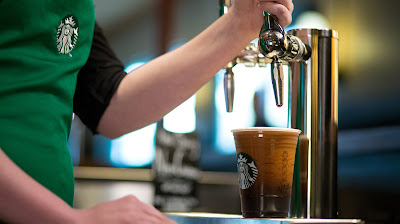Scientists from MIT and Harvard University are placing their faith in a gene editing tool that may revolutionize the treatment of deadly diseases. CRISPR, which stands for Clustered Regularly Interspaced Short Palindromic Repeats, has the potential to unlock the next generation of treatments for conditions like cancer, ALS, or Alzheimer's. Learn how CRISPR is poised to change genome editing and biomedicine over the next few decades.
How Does CRISPR Work?
Bacteria within the body have their own innate intelligence -- the fascination with the microbiome being one example of this scientific principle.
Scientists observed that bacteria was able to fight infections by retaining a slice of DNA from invading viruses, so they could recognize if the virus returned and mount a faster defense. If the intruder returns, the body's natural CRISPR goes after it. Scientists were able to create their own CRISPR, which they can use to edit genes.
You may remember all genes contain chemical basis, referred to by the letters C, G, A, or T. A genetic typo creates markers for disease. Scientists can search for specific bad combinations using CRISPR -- for instance, the gene that would cause ALS -- and then slice out the faulty gene and replace it with something innocuous. By doing this before someone gets sick, the theory goes, CRISPR can save lives.
Already, scientists are using CRISPR to breed mosquitos that cannot transmit malaria, an application that would save thousands of lives. Others are working to create a stronger rice plant that can withstand floods and drought caused by climate change.
There are a few examples that illustrate the power of CRISPR.
Scientists are still figuring out the true potential of this genome editing tool, however, there is great promise and great enthusiasm for CRISPR's potential from scientists across the globe. In the meantime, laboratory workers must preserve genes and tissue samples for vitality using a nitrogen freezer.
Keeping Tissue Safe in the Laboratory Setting
Nitrogen freezers maintain ultralow temperatures of -150 to -200 Celsius. When genetic material is frozen at such a low temperature, it goes to sleep. The material can be thawed and reanimated for use in the lab setting. Along with low temperatures, the key to maintaining the vitality of the tissue is a slow freeze and thaw. If cells were to freeze too quickly, their cell membranes would burst. The same holds true for thawing frozen tissue. Thus, nitrogen freezers are a mainstay of the lab setting because they provide a reliable, efficient way to keep genomic materials chilled until use.
Any time nitrogen is used, there is a risk of accident if the nitrogen leaks or spills. Nitrogen does not have a color, scent, or odor, which means lab workers wouldn't notice a leak -- although they might notice if, say, the freezer door did not fully close.
Like other inert gases, nitrogen displaces oxygen. If the nitrogen freezer were to leak, the laboratory could lose so much oxygen that workers would experience respiratory distress. To safeguard against a leak, laboratories must use an oxygen deficiency monitor.
An oxygen deficiency monitor tracks the level of oxygen in the lab through constant monitoring. Since nitrogen displaces oxygen, this monitor can detect a gas leak by noting falling levels of oxygen. A digital display indicates the current amount of oxygen in the room, providing assurance for lab staff that everything is working as it should. If oxygen falls to the critical threshold as defined by OSHA, an alarm goes off. Lab workers can exit the premises and wait for emergency personnel to respond.
PureAire creates robust oxygen monitors trusted within the scientific and biomedical communities. PureAire's oxygen deficiency monitors work in freezing temperatures and confined spaces, remain accurate despite barometric pressure shifts, and last 10 or more years without calibration.
To learn more about PureAire's products, visit www.pureairemonitoring.com
sited sources:
https://www.cbsnews.com/news/crispr-the-gene-editing-tool-revolutionizing-biomedical-research/
https://www.thermofisher.com/us/en/home/references/gibco-cell-culture-basics/cell-culture-protocols/freezing-cells.html





